The term “working alone” will be used a lot in 2020. Here are 5 reasons why it may even be the hottest term of the year among safety professionals.
For those of us in safety positions, we sometimes have to fight harder than any other department to get budget for key projects. It’s the truth that rears its ugly head when the economy slows and purse strings tighten. How do you prove the ROI of an investment that is meant to prevent an accident that has never occurred? It’s a catch-22.
“We’ve never had someone go missing while working alone. Our current system seems to be working fine.”
DOWNLOAD NOW: Working Alone Policy Template
Until it doesn’t. Until someone does go missing, or gets injured, or has a close call and was unable to reach anyone for help.
When preventable accidents happen, they garner media attention. This is exactly what happened to Erika Morales and leads us to the first reason why you’re going to hear about lone workers a lot more in 2020.
1. Increased Work Alone Media Attention
Erika Morales is the subject of the trending hashtag #thenightshift in conjunction with the PBS documentary Rape On The Night Shift.
An article detailing the events starts out with “It was the isolation that made Erika Morales most wary of her job as a night shift janitor. The solitude had begun to feel like a trap”.
Morales, like the thousands of other custodial employees who work the night shift, worked in isolation. Erika Morales had no means of communicating with the outside world, and nobody in sight to help her during her time of need.
As the title of the documentary suggests, Erika was the victim of rape during her night shift. The rape was at the hands of her supervisor. Erika had previously made complaints about his behavior but her employer did not intervene and she remained at risk during her shifts with no tool to help her communicate distress.
The article goes on to shed light on the fact that this is far from an isolated incident. “About 50 people a day are sexually assaulted or raped while they’re on the clock, according to the U.S. Department of Justice. Any statistic about sexual violence, though, is a farce – only a fraction of victims ever come forward to report the crime”.
We read about this and it frustrates us because we know that the situation was not only preventable – it was easily preventable. No expensive equipment, no elaborate scheme, just the wherewithal to recognize Morales as a lone worker and monitor her well-being throughout her shift accordingly.
2. Increased Work Alone Regulations
Public tragedies like that of Erika Morales can often be the push that politicians and board members need to enforce meaningful change. The second reason why you’ll hear a lot more about lone workers in 2020 is that the rules are changing, and if companies don’t want to play by the rules, they will have to pay.
Here in Newfoundland where our Telelink Emergency and Safety headquarters is located, our local OHS act has recently been updated to protect against workplace violence, effective Jan 1, 2020. These changes mean that all Newfoundland and Labrador businesses are legally required to take new measures to protect employees at risk of workplace violence, the majority of which are also lone workers.
Learn about OHS regulations for every province and state.
The new changes mean that employers must have a risk assessment process for lone workers, a harassment prevention plan, violence prevention plan, and proper records must be kept to document adherence to the rules.
Sweeping changes like this aren’t just specific to Newfoundland. You can expect to see similar changes across Canada and the rest of North America.
In a 2019 report titled Dying For Work In Massachusetts the local COSH details a need for change after death totals at work were on the rise once again and workplace violence is the fourth leading cause of death according to the report.
More and more governing bodies are stepping up. Working alone will always have its challenges and risk factors, but the way employers handle their lone workers, especially those also at risk of workplace violence, has an incredible impact on the safety of everyone involved.
The changes put forth by OHS are positive changes. They make our workplaces safer and happier — more productive even. Many employers are happily introducing new policies and taking risk-mitigating measures to protect their employees and lone workers. Other employers are simply feeling the pressure from their own employees to do so.
3. Increasing Employee Pressure For Safe Lone Work
It isn’t just the mounting external pressure from public stories like Erika Morales, or even the external pressure from increasingly stringent OHS requirements, many employers are feeling the pressure from within their own organization.
The fact of the matter is, we don’t live in 1908 anymore; people aren’t simply grateful for having a job. Employees don’t put up with unfair treatment, and they aren’t afraid to call you on it either. Working alone in 2020 must look different.
Even outside of unions, today’s employees are well versed on their rights, especially those who face greater risks like lone workers. The newer generation has no problem saying no to tasks for which they feel they are ill-equipped or not adequately trained. Delays like that can hold up a project for hours or days, and that costs money. Real costs that affect your bottom line as much as any other.
RELATED: Working Alone Policy Template Here
Employees will not simply roll over and put themselves in danger because “that’s the job”. Lone workers are exercising their rights as employees and refusing unsafe work. Management is feeling the heat.
4. Supervisors Carry The Working Alone Burden
Management isn’t just hearing about the dangers of working alone from their front line workers either. The supervisors who are responsible for monitoring these employees are worried about someone slipping through the cracks, especially those who work 9-5 but manage 24/7 teams.
When supervisors should be going home to relax and spend quality time with their families, they are often fielding check-in calls and texts from field employees trying to ensure each and every one gets home safely. Supervisors are well aware that many jurisdictions carry financial and criminal penalties for individuals under “Duty of Care” laws who are deemed negligent in their supervisory duties should an injury or fatality occur.
Juggling 24/7 monitoring of employees along with all the other duties a supervisor must perform is a risk many supervisors are no longer willing to take, for both themselves and their employees.
5. Proliferation Of Connected Devices
Perhaps the biggest reason why lone working will become 2020’s hottest trend among the safety community is the proliferation of connected devices and apps. In the past, it was difficult and to monitor the whereabouts of all your lone workers in real-time. Thanks to the IOT movement, companies can now leverage smartphones and GPS-enabled hardware to monitor employee safety and optimize operations.
Today’s connected technology is readily available, cost-effective, and most of all – impactful to both safety and the bottom-line.
The new wave of lone worker devices and apps can not only provide GPS location and automate check-ins, it also enables proactive intervention by detecting incidents such as slips, trips and falls or unconsciousness, in real-time.
The business case writes itself, but we know that despite all of this mounting evidence in favor of more robust work alone processes and technology, it can still be a challenge to secure the budgetary resources required for this important safety initiative.
Here’s how you can get your year started on the right foot (without having to request budget). Download your free lone worker policy here and begin by putting best-in-class practices into place.




Post a Comment